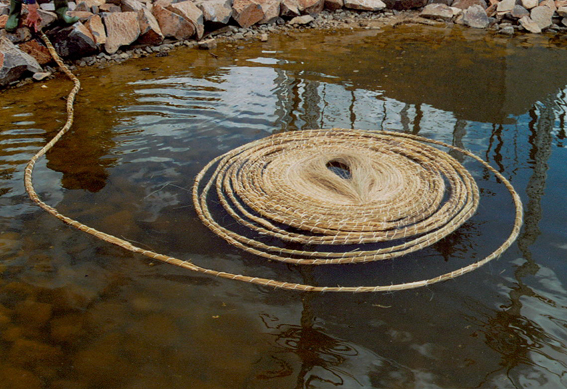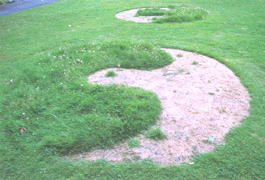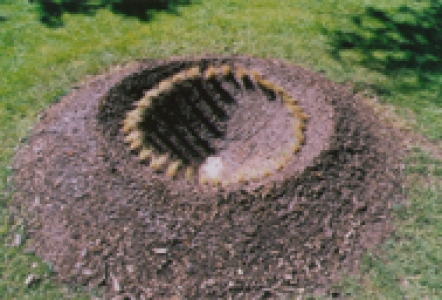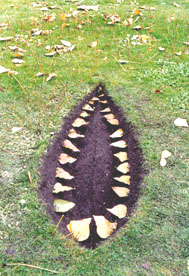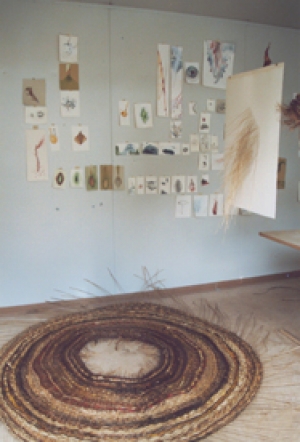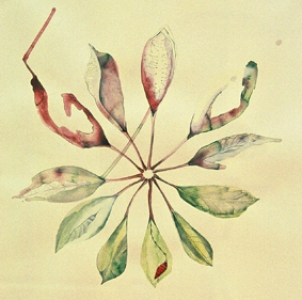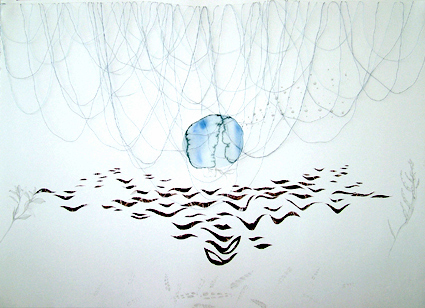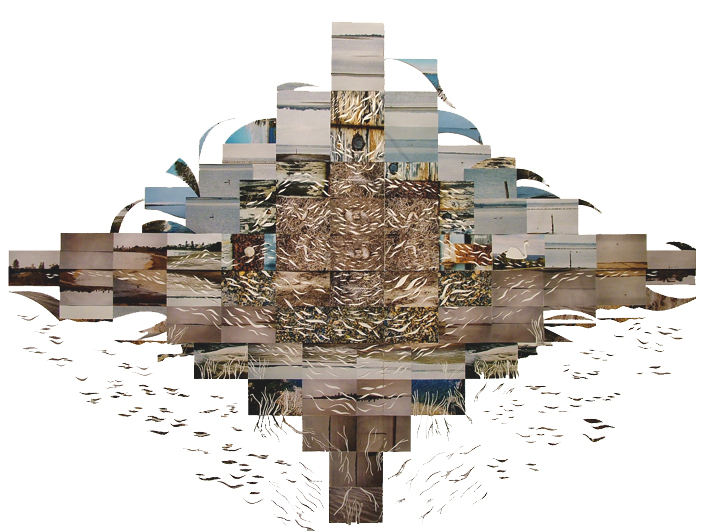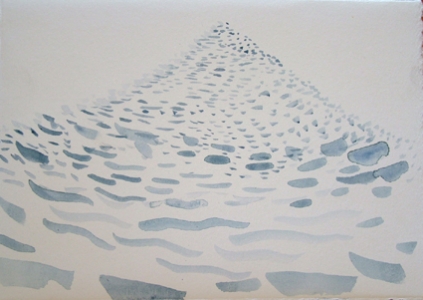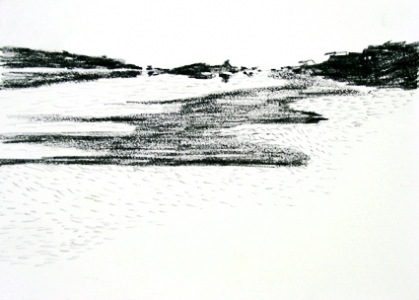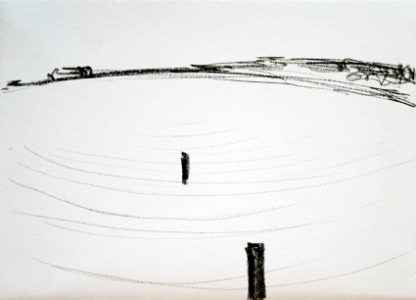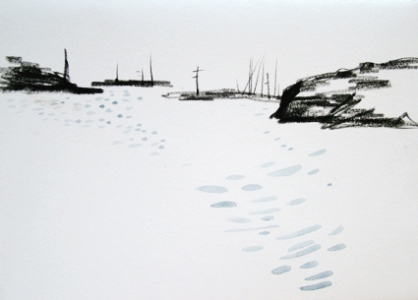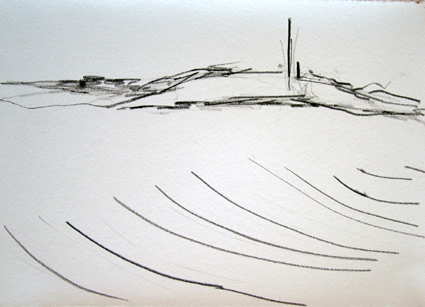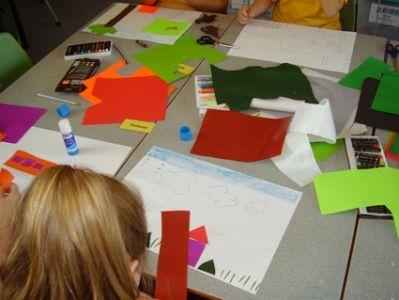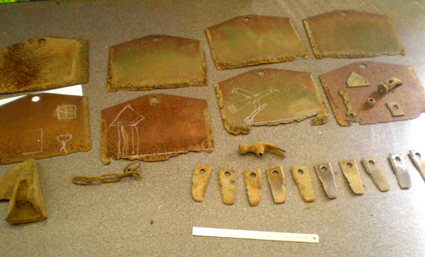
Artist In Residence @ The Geelong Botanic Gardens
This residency allowed me to create and explore a body of work within the space of the Geelong Botanical Gardens. These ephemeral installations took on the concept of ‘Earth as Clay’, which is about going beneath the surface and making the dark unseen aspects part of the human periphery. This enabled the earth to be shaped above and below the surface taking on a process of construction and deconstruction, evolving over a period of time by weathering, decay and growth, which can create a new variation if not a completely different piece of artwork. It is a process that is about working in collaboration with mother earth. The out comes of this residence broadened the perceptions of the way the Geelong Botanic Gardens was used and seen, creating greater scope for diversity.
Artist in Residence @ The Geelong Botanic Gardens
Tania Virgona’s position as Artist in Residence at the Geelong Botanic Gardens has offered an opportunity to view this historic place in new and remarkable ways. The science of botany together with the practice of horticulture have been the principle concerns directing activity at the GBG throughout its150 year history. Visitors anticipate an experience informed by the age of the garden, their knowledge of plant collections and seasonal change. The works presented in this exhibition reflect an alternative view of the gardens and the materials contained within. Of particular importance are the recording of earthworks and organic insertions that challenge the notion of the garden bed and plant arrangement normally associated with the nurture of abotanic garden.
Tania’s introduction to the GBG was brought about through her involvement in the locally inspired Walk West project. During her time spent sculpting timber in the works depot at the GBG Tania recognised an opportunity to explore the gardens and with this a chance to transform its varying qualities into art form. The design process and development of the installations commenced in September 2003 and became a public event that included community participation and weekend workshops.
The exploration of place and space and the evolvement of the works within an important public garden invited a verbal and visual dialogue with gardens Staff, Friends and Visitors to the GBG. The impact of the works in progress was extremely varied. Statements expressed as excitement at the temporary change to these ‘still’ spaces contrasted with alarm at the incisions cut into normally pristine lawns. Tania observed that the weekend visitor was often more able to grasp the concepts being explored than those involved in the gardens on a daily basis. This may be explained by the strong emotional attachment that inhabits those working with gardens. The disturbance of lawn areas and the digging and mounding of earth for non horticultural purposes was at odds with the regular activity of garden making.
The concept of manipulating the landscape for the purpose of expression is not a new phenomenon. Earthworks dating to previous centuries that are expressed as scrapings, mounding and excavation were primarily made for cultural and religious purposes. These works continue to engage and fascinate the viewer and are recognised as places that intensify the connection of the human intellect with the landscape. They are the mark of human ideas measured though time.
During the late 1960’s and early 1970’s the environmental art movement gained momentum. These works paralleled political and social unrest though the western world and mirrored a questioning of accepted values. Environmental works created by Michael Heizer and others since this period have challenged the notion of art as a collectable item. Works created on a monumental scale were directed at the viewer with the intention of magnifying the landscape experience. The ‘owners’ of these works were those who undertook site visits to remote locations to engage with the installations. This was a radical move away from studio based art and forged a new direction in interpreting environment. In this current era environmental art moves in and out of gallery spaces. This exhibition is a melding of the two forms with landscape material as the palette and the record of events as the story of experience.
The principle purpose for Tania’s residency in the gardens was for “Professional Development”, funded through Arts Victoria and supported through the City of Greater Geelong. The activity of investigation normally cloistered in the artist’s studio became a public event and the dynamic thought process, where doubt and questioning result in design resolution, were viewed by all. When viewing images presented in this exhibition we need to consider the artist experience of incorporating a private practice within a public realm. Visitors witnessed the thought process and experienced the journey of nature becoming art and art becoming nature. This made the art subject to considerable question, which intensified and broadened the collaboration beyond the garden.
The traditional view of the Artist in Residence at a Botanic Garden equates with the botanical exercise, the recording of plant material to precise measurement and in exact detail accompanied by scientific language that clearly categorises the specimen studied. The Virgona residency has challenged this notion. From its beginning it has questioned our preconceived ideas of the historic space and by utilising the ground surface and plant material as artistic palette has forced a new view of the continued capacity of these gardens to inspire the visitor.
The challenge of cutting into the ground for purposes other than horticulture was perhaps made easier by the recent implementation of the 21 st Century Garden, however this event was specifically for horticultural and botanical purposes. Tania’s installations have disturbed historic spaces and opened the ground for viewing as an aesthetic experience. The works have explored the silent heart of the gardens transforming the earth and its
grassy surface into art. The exploration of strength and stillness on and below the ground surface raises questions about the usually unexplored static values within gardens. Do these factors unknowingly emanate upward into place intensifying the sense that is associated with being in a garden?
The GBG are Australia’s fourth oldest public garden and form an important historic reference in the City of Geelong. The importance of the gardens is reflected in the depth of the plant collection, the age of individual specimens and the dynamic design and plantings contained within the new 21 st Century Garden extension. The unique opportunity offered to the City of Greater Geelong to host an Artist in Residence to investigate the unexplored medium of ground plane, earth form and plant material has opened the minds of those usually visiting the gardens.
Works on paper and digital images contained within this exhibition are a visual expression of subliminal feelings not often articulated about gardens spaces. The works successfully investigate and challenge our preconceived ideas of the values contained within historic gardens and help us redefine the spacial statements and unique qualities that make the Geelong Botanic Gardens a special place to visit.
Helena Buxton
Landscape Architect
Further reading
‘Designing The Earth -The Human Impulse to Shape Nature’, David Bourbon
‘Earthworks and Beyond’, John Beardsley
‘Michael Heizer, EFFICY TUMULI’, Douglas C. McGill
‘Silent Spaces’, Chris Drury
“When you make a sculpture by digging out dirt, you’re negating all of these materialist concepts. You change the definition of material and material usage, and you redefine what an object is”…Michael Heizer EFFICY TUMULI
 |
 |








